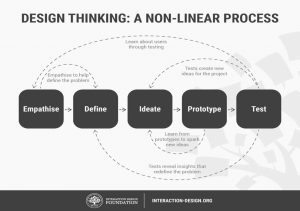Digital and data are like TV and movies.
Imagine the following three scenarios of watching a movie during a long weekend with different types of technology. Note, all these movies are rated high or low on IMDB.
- Watching an amazing movie like Avengers End Game or Avatar on a laptop or iPad
- Now, that same amazing movie watched in a theater with surround sound or a home theater
- How about The Last Airbender or Guardians (NOT Guardians of the Galaxy, Google this movie)
Chances are you’d find that watching movies on a big screen with surround sound would provide a better cinematic experience than on a small screen. Basically, a great movie watched on an iPad is pointless because the visualization and the sound effects are key components that make it great. On the other hand, a low-rated movie with a horrible plot and no visual treats watched in a home theater is kind of a waste of time.
Digital and data have a similar relationship. A beautifully designed mobile app displaying incorrect information is going to lose trust from its users. However, a thorough analysis using a machine  learning algorithm without visualization or explainability is not going to have action. The art of “Design Thinking” is relevant in this context where you need to empathize the user community you are going after and then ask them the question of “value of information” in a language that is important for them (business value).
learning algorithm without visualization or explainability is not going to have action. The art of “Design Thinking” is relevant in this context where you need to empathize the user community you are going after and then ask them the question of “value of information” in a language that is important for them (business value).
5 Digital and Data Considerations for End-to-End Architecture
Here are five ways to think about digital and data when you are designing an application to solve a business problem.
- Start with the business value (the why): This is so important, because every dollar that an organization is spending at this time should help them compete in the marketplace and should have a tangible impact in the bottom line.
- Empathize the experience: Put yourself in the business users’ shoes and understand their experience with this application. If possible, put a journey map to articulate it.
- Find the data that will deliver meaning to that experience: Data is such a critical aspect of the experience, because it articulates the meaning. If the objective of an app is to do eCommerce, it is important to have data that reflects parts of eCommerce such as products, customer, transactions, and so on.
- Solution the digital and data components together: It is so important that the components should include both application architecture and data architecture to deliver a seamless, yet informational experience to the end user to get their buy-in and loyalty.
- Deliver in increments: I’m still seeing that companies are trying to push waterfall in parts of the solution to isolate digital and data as two separate components. It’s not going to work. You are going to have Shadow IT (which is now more than ever very easy to get to especially with open technology and large communities of users using it) and data will lose its meaning and value creating a governance nightmare for the organization to provide a holistic picture.
Talk to us and we can help you start thinking about the digital and data pieces and how they fit into the intelligent enterprise model.

